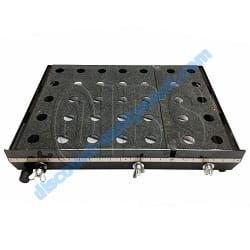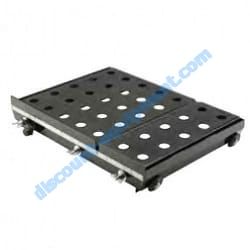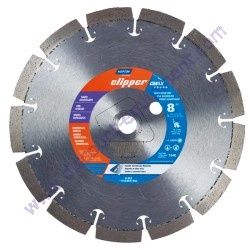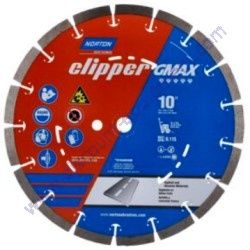Norton Clipper C13PE 18" Blade Cap, Manual Start/Standard 13HP 2750RPM Gas Small Early Entry Saw 70184647524
Safety Information
Norton Clipper C13PE Gas Small Early Entry Saw
A. Safety Precautions
Important! The following safety precautions must always be observed.
Hazard Symbols
Fuel (gasoline) is extremely flammable and its vapors can explode if ignited.
Store gasoline only in approved containers, in well-ventilated, unoccupied
approved areas, and away from sparks or flames. Do not fill the fuel tank
while the engine is hot or running. Do not start the engine near spilled fuel.
Never use the fuel as a cleaning agent
Engine components can get extremely hot from operation. To prevent burns,
do not touch the engine or related parts while the engine is running or
immediately after it is turned off. Never operate the engine with any heat
shields or guards removed.
Keep all guards in place when operating any piece of equipment
Keep hands, feet, hair, and clothing away from all rotating parts
Lethal Exhaust Gas use only in well ventilated areas. Engine exhaust gases
contain poisonous carbon monoxide, which is odorless, colorless, and can
cause death if inhaled. Avoid inhaling exhaust fumes, and never run the
engine in a closed building or confined area
Never tamper with the governor components of settings to increase the
maximum speed. Severe personal injury and damage to the engine or
equipment can result if operated at speed above maximum. Always obey the
maximum speed rating of blade.
DO NOT LIFT THE SAW BY THE HANDLE BARS
Dust and Silica Warning
Grinding/cutting/drilling of masonry, concrete, metal and other materials can generate dust, mists and fumes containing chemicals known to cause serious or fatal injury or illness, such as respiratory disease, cancer, birth defects or other reproductive harm. If you are unfamiliar with the risks associated with the particular process and/or material being cut or the composition of the tool being used, review the material safety data sheet and/or consult your employer, the
material manufacturer/supplier, governmental agencies such as OSHA and NIOSH and other sources on hazardous materials and make certain to comply with all product warnings and instructions for the safe and effective use of the material being cut. California and some other authorities, for instance, have published lists of substances known to cause cancer, reproductive toxicity, or other harmful effects.
Control dust, mist and fumes at the source where possible. In this regard use good work practices and follow the recommendations of the manufacturer/supplier, OSHA/NIOSH, and occupational and trade associations. Water should be used for dust suppression when wet cutting is feasible. When the hazards from inhalation of dust, mists and fumes cannot be eliminated through engineering controls such as either vacuum and/or water mist, the operator and any bystanders should always wear a respirator approved by NIOSH/MSHA for the material being cut.
Use Approved:
Eye Protection
Hearing Protection
Respiratory Protection
Head Protection
1. Before mounting any blade on the saw, the blade should be inspected for any damage which might have occurred during shipment, handling or previous use.
2. The blade collars and arbors should be cleaned and examined for damage before
mounting the blade.
3. The blade must be properly fitted over the arbor with the drive pin on the outside collar projecting through the drive pinhole on the blade and inside collar.
4. The blade shaft nut, which is a left-hand thread nut, must be tightened securely against the outside blade shaft collar.
5. The blade must be operated within the specified maximum operating speed listed on the blade.
6. Turn water control valve to full to provide adequate coolant (4 to 6 gallons per minute) for diamond blades and wet cutting abrasive blades. Insufficient coolant could result in severe blade breakage or diamond segment separation.
7. The blade guard must be in place with the nose guard down and locked when the saw is running.
8. The operator should wear safety glasses and any other appropriate safety equipment.
9. When starting the saw, the operator should stand away and to the side of the blade.
10. If for any reason the saw should stall in the cut, raise the blade out of the cut. Check the outside blade shaft collar and nut for tightness. Inspect the blade for damage before restarting the saw. Use caution when resuming a cut. Be certain that the blade is in alignment with the previous cut.
11. During cutting operations, do not exert excess side pressure on the handles as a method of steering. Do not force the blade into the cut by lowering the blade too fast or by pushing the saw too fast.
You Are Responsible For Your Safety!!! | 















